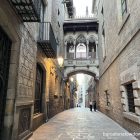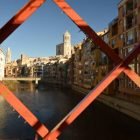Barcelona is renowned for its public art, and the city’s many parks and plazas are replete with monuments ranging from traditional statues paying homage to people and events of the past to intriguing contemporary pieces by international and local artists.
But it’s not just the parks and plazas which are full of art. Wherever you go in the city, it seems like any available public space is seen as an excuse for another art installation.
Barcelona’s waterfront is a prime example of this phenomenon. Once a derelict industrial area of dockyards, railway lines and disused factory buildings, the area was redeveloped in preparation for the Barcelona Olympics of 1992.
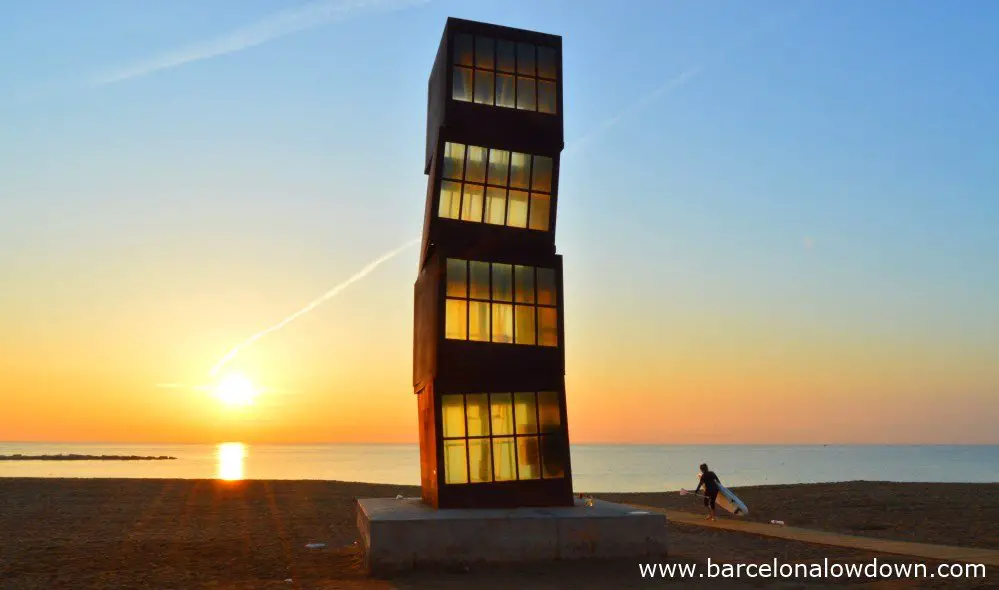
The old railway lines were re-routed underground, and dilapidated warehouses were torn down to make way for sandy beaches and an attractive promenade decorated with a collection of sculptures created by top international artists.
In the three decades since the Olympics, additional sculptures and monuments have been added to the collection, transforming the waterfront area into a kind of open-air art gallery.
The itinerary described below starts at the Drassanes metro stop (L3) near La Rambla and takes you past the Columbus Monument to the Port Vell harbour before continuing along the boardwalk to the Barceloneta and Somorrostro beaches.
Along the way, the route visits twenty-one sculptures and, at a steady pace, takes about ninety minutes to complete, although there are plenty of restaurants and beach bars along the way where you could stop and take a break.
It’s pretty easy to follow, but I’ve created a Wikiloc GPS track that you can download to your phone here.
Walking Route: Discovering the Public Art on Barcelona’s Waterfront
To get to the start of the route, we take the L3 metro to Drassanes. From here, it’s a short walk along Avinguda de Les Drassanes to Plaça del Portal de la Pau where we see the Columbus Monument, which is the oldest monument on this route.

The Columbus Monument predates the Olympics by almost exactly a century and was installed in 1888 for the Universal Exposition, another event that transformed Barcelona and whose legacy can be seen throughout the city, especially in the area near Plaça d’Espanya and Montjuïc.
Next, we turn right and walk a few metres along Passeig de Joan Carner to Plaça de les Drassanes and Waves, which is a massive stainless steel sculpture by Spanish artist Andreu Alfaro.
From here, we turn around and continue along the other side of the historic Customs House back to Plaça del Portal de la Pau where we take a look at the poignant Monument to US Servicemen which, like the waves monument, evokes the power of the sea, this time in cast iron.
A few metres away, and still in the shadow of the Columbus Monument, stands a bronze statue of former Mayor of Barcelona, Ròmul Bosch i Alsina, who had close ties with the port.
From here, we continue along the Rambla de Mar, a wooden walkway that leads to the centre of the harbour, where we see the two Miraestels statues created by Robert Llimós. The statues, both of which float in the harbour, are part of a series of paintings and sculptures that were inspired by a poem written by Joan Brossa.

Returning to the so-called Moll de Bosch i Alsina (Bosh i Alsina wharf), we come to a monument to Joan Salvat-Papasseit, who worked as a night watchman at Barcelona harbour before becoming one of the most influential Catalan poets of the twentieth century.
A little way further along the wharf is La Parella, a bronze sculpture by Chilean artist Lautaro Díaz Silva, which portrays a mermaid couple gazing blindly out across the port.
Next, we cross one of the red footbridges across the Ronda Litoral and continue along Passeig de Colom towards two of the best-known statues in Barcelona, the Giant Lobster, by Javier Mariscal and Barcelona’s Head, by Roy Lichtenstein.
Having been dwarfed by the cartoonlike Gambrinus statue, we head back towards the Moll de la Fusta where we take a look at the Monument to Sportspeople of the Sea, before continuing around the harbour towards the Barceloneta.
After passing the ubiquitous line of seafood restaurants and brunch spots on Passeig de Joan Borbó we come to Plaça del Mar, where the next two sculptures are located.
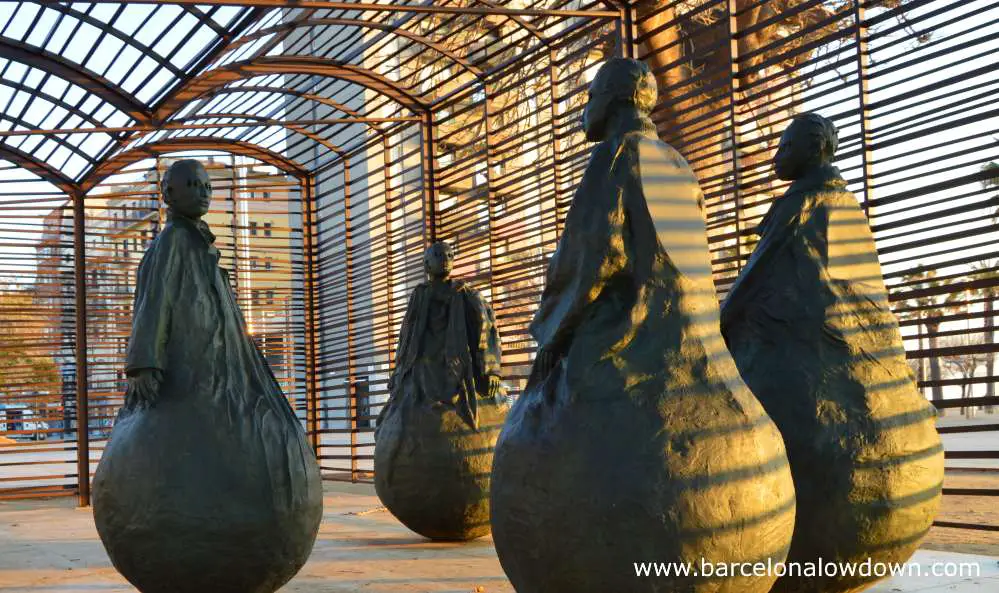
First up is the rather disturbing A Room Where It Always Rains by Juan Muñoz, which was inaugurated in 1992 and is one of the original statues that were commissioned for the Olympics.
A few metres from there stands Homage to swimming by Alfredo Lanz, which represents four of the aquatic disciplines that were included in the Olympic games: water polo, diving, freestyle and synchronised swimming.
From here, we follow the boardwalk alongside the beach to the Wounded Star Sculpture by Rebecca Horn. Apparently, the ten-metre-high statue, which stands on a concrete block implanted directly in the sand, is a homage to the ramshackle chiringuitos and seafood stalls that used to stand here before the area was remodelled. During the summer months, you’ll often see people building elaborate sand sculptures on this part of the beach.
Now it’s time to leave the beach and head into the Barceloneta neighbourhood, where we find the Roman Scales sculpture by Jannis Kounellis. This is another of the sculptures that were commissioned for the games, although it was originally installed in a different location. Like the Wounded Star, the scales are a reference to the area’s past, harking back to a time when the Barceloneta neighbourhood was home to dockworkers and fishermen.
From here, we continue along the Passeig Maritim to the Parc de la Barceloneta, where we find a curious monument to Simón Bolívar. If you’ve not heard of him before, Bolívar was a military commander who played an important role in ending colonialism in South America.
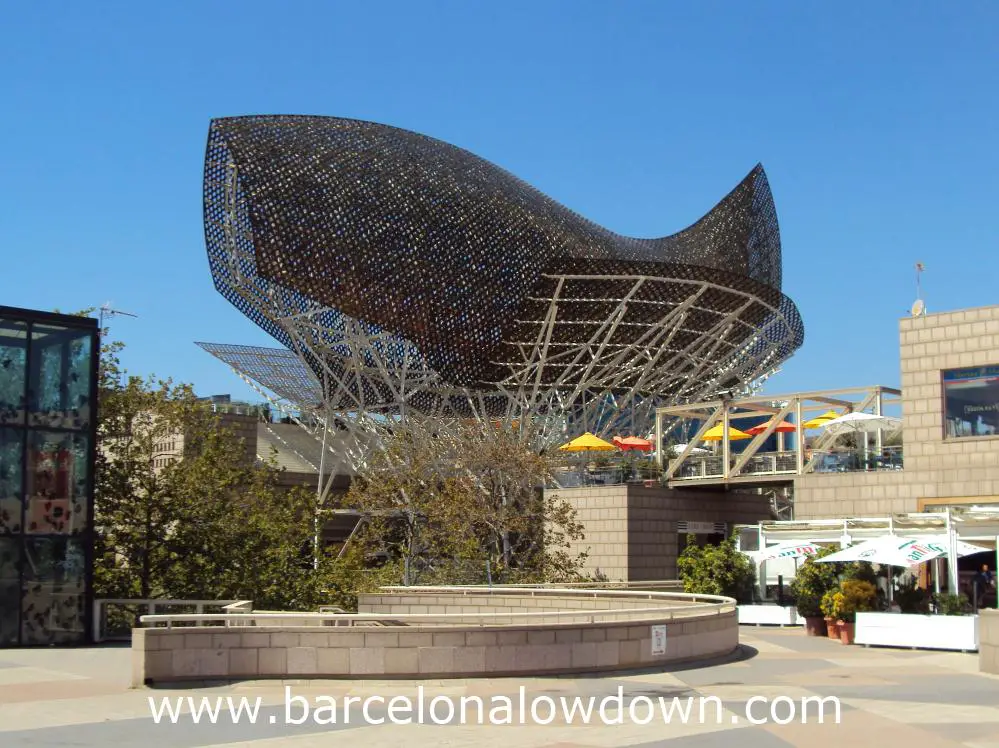
Further along the Passeig Maritim, we come to El Peix by Frank Gehry, which is a large metal sculpture that forms a canopy in front of the luxurious Hotel Arts. One of the largest and best-known statues in Barcelona, over the years, El Piex has truly become an iconic part of Barcelona’s skyline.
After this, we come to the marina, and an attractive modern neighbourhood called La Vila Olímpica, both of which were built especially for the Olympic Games.
Heading inland, along Carrer de la Marina, we come to a park called Plaça dels Voluntaris Olímpics, where we see another pair of emblematic sculptures.
The first is David and Goliath by Antoni Llena i Font, which is a homage to the shanty towns which for many years stood on the Somorrostro beach.
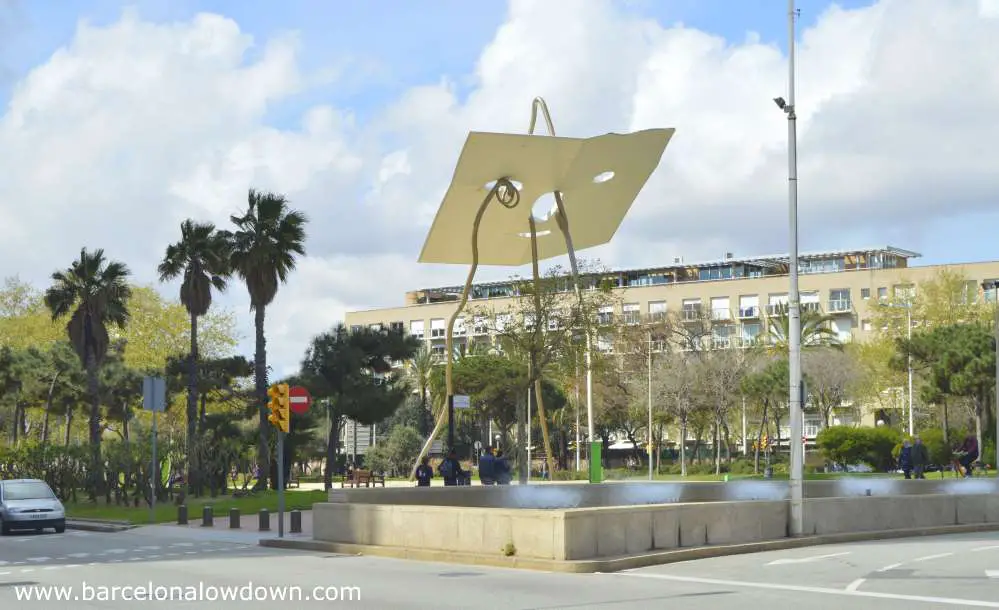
The other is Marc, which is one of a pair of nearly identical statues by Robert LLimós. The other statue from the pair resides in Atlanta, the city that hosted the 1996 Olympic games.
On our way back towards the beach, we continue through the Parc del Port Olímpic, where there are two small bronze sculptures.
Unfortunately, I’ve not managed to find much out about the first of these statues, which represent two sailing boats made of bronze.
The other sculpture, which is slightly better known, is the statue of Cobi by Javier Mariscal. Cobi was the official mascot of the Barcelona Olympics and was so popular that, in addition to featuring on T-shirts and other Olympic merch, he also inspired a spin-off cartoon series that showed on TV in Spain and abroad.
The Cobi sculpture stands in the middle of a small pool in front of a restaurant that unfortunately went out of business a few years ago. At the moment, the whole area is looking pretty run down and has been fenced off, although you can still see the statue.
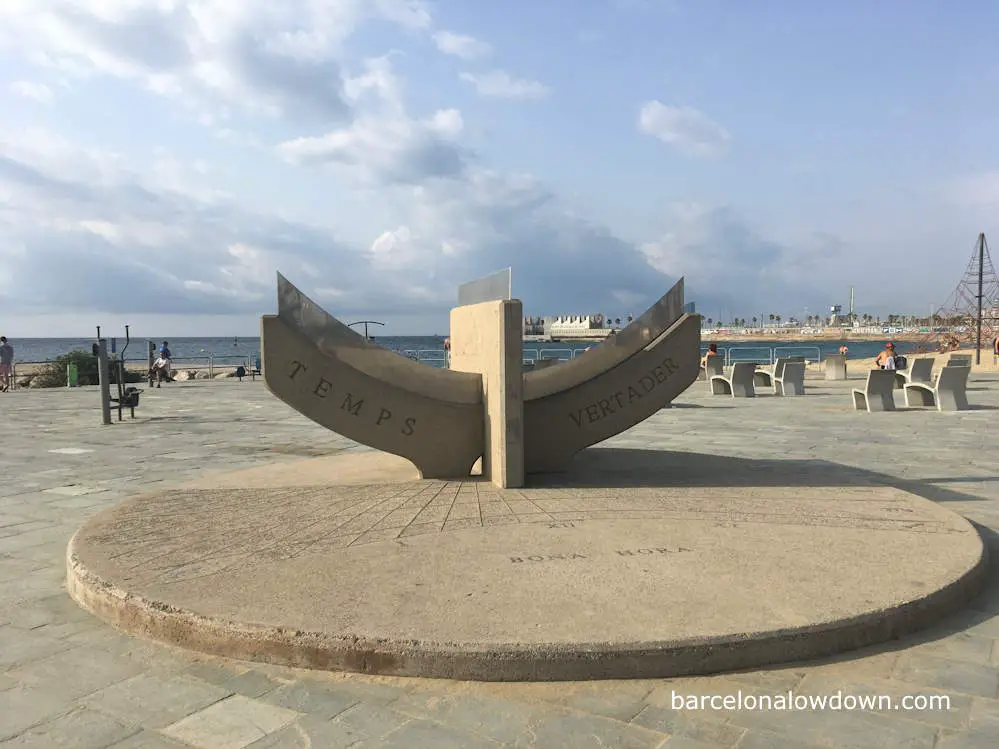
The last structure we are going to visit on Barcelona’s waterfront is a giant concrete sundial called Temps Vertader by Rafael Soler, which was inaugurated in 1993. Unlike traditional sundials, which cast one shadow, the time is indicated by the intersection of two shadows, which are created by the statue’s two concrete arms.
From here, we head back along the boardwalk, past the David and Goliath statue, to the Ciutadella I Villa Olímpica metro station. On the way, it’s worth stopping off at Parc de Carles Primer to see the Ass Monument by Eduardo Úrculo.
Shortly after the monument was unveiled in 1999, Úrculo was quoted as saying: As far as I know, Barcelona will be the first western city to have a monument to the ass.
Map
Av. del Litoral, 9994, 08005 Barcelona, España

